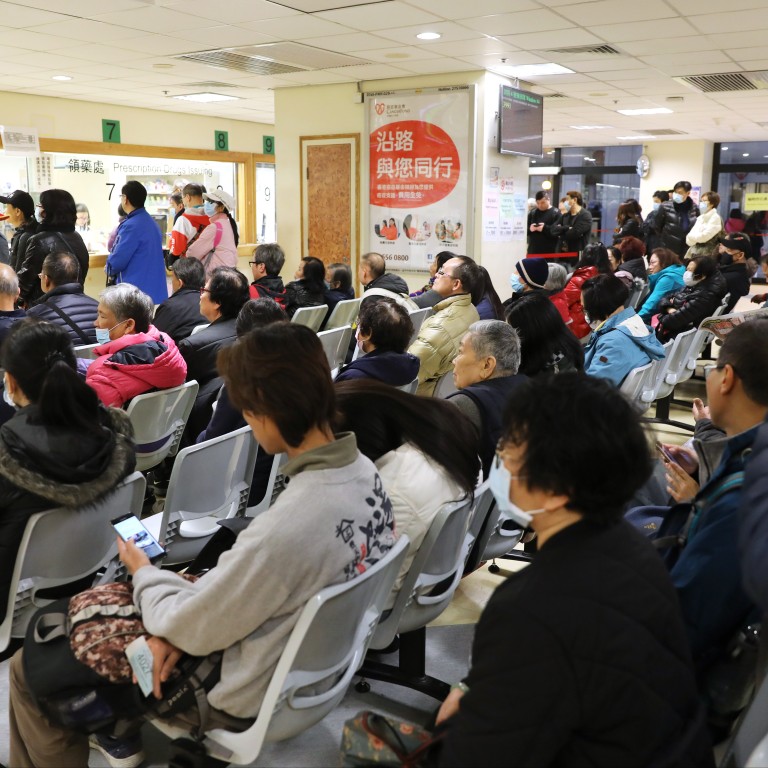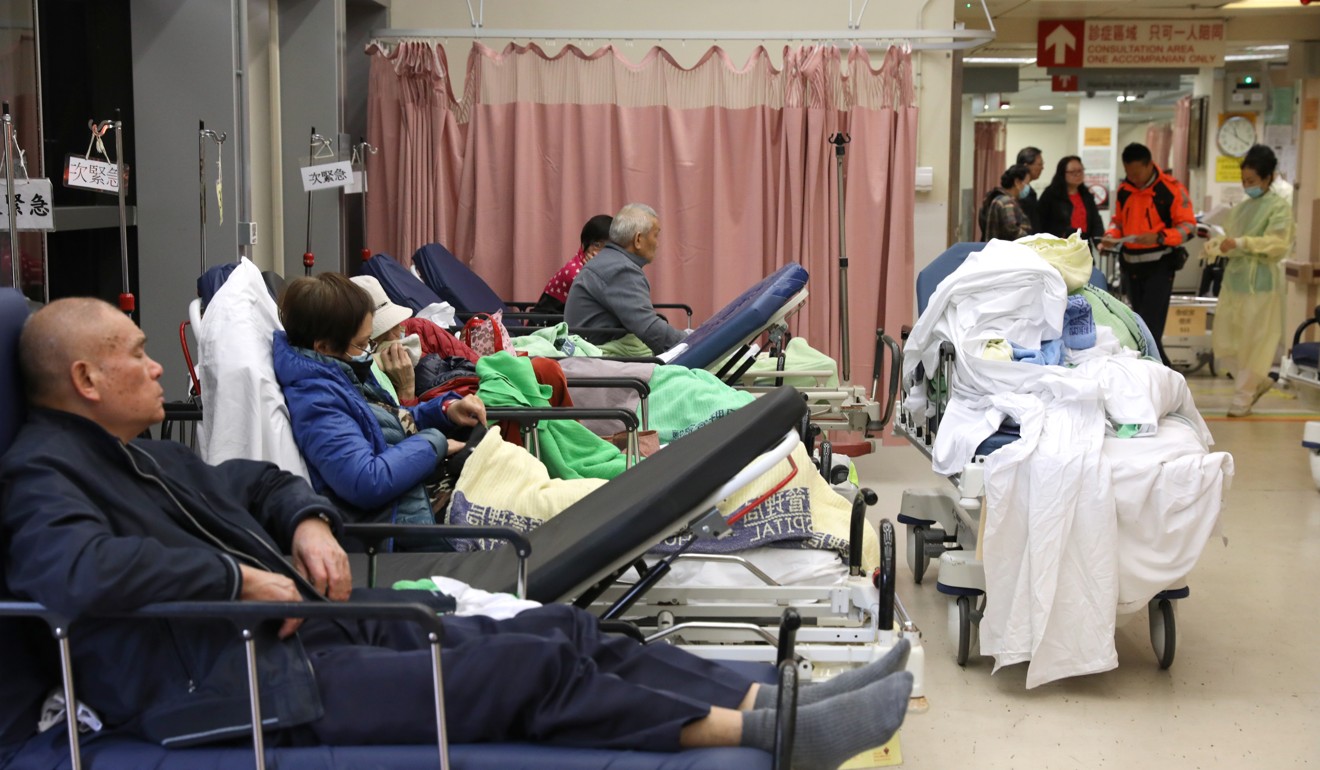
Hong Kong hospital wards packed like Chinese restaurants, doctors complain as deadly flu surge grips city
- Frustration boiling over at what staff see as no improvement in 30 years, according to veteran paediatrician
Hong Kong doctors and nurses at overloaded public hospitals say they are having to set up beds in corridors and offer telephone consultations to free up space on wards stretched to breaking point as the winter flu surge grips the city.
The situation at private hospitals was reportedly equally dire on Thursday, with one in Sha Tin saying its children’s ward was 100 per cent full and new patients might need to wait up to 24 hours for admission.
The occupancy rate on public medical wards was 110 per cent, according to Hospital Authority figures, meaning temporary beds were having to be laid out between existing beds or along corridors.
Flu-season preschool closures ‘would have worked better a week earlier’
To voice their dissatisfaction with the heavy workload, two doctors’ groups and medical sector lawmaker Dr Pierre Chan were set to hold a forum at Queen Elizabeth Hospital in Yau Ma Tei on Saturday.

“More beds have been added in those wards but nursing manpower has not been increased,” said Cecilia So Chui-kuen, president of the Hong Kong Nurses General Union.
A 34-bed ward might now have 40 to 50 beds, while a 45-bed ward would have increased to 60, she said.
Usually there were five nurses on a ward, she added.
“It would be fine if new patients were admitted to a ward one by one, but if two or three are transferred in at the same time, it is really hard to handle,” So said.
The flu outbreak continues to sweep through education facilities in Hong Kong. Some 384 kindergartens and childcare centres had reported an outbreak as of Thursday, prompting the government to bring forward the schools’ Lunar New Year holiday in an attempt to curb the spread.

On children’s wards, where the occupancy rate is close to 100 per cent, extra beds have also been squeezed between existing beds. Some doctors said it was not uncommon to see 10 children jammed into a six-bed ward.
A veteran public hospital paediatrician, who preferred not to be named, said doctors and nurses were frustrated because they felt no improvements had been made in the past 30 years.
“It is like when Chinese restaurant staff try to put as many tables in the restaurant as possible,” he said.
“There is no reason we should let this situation repeat itself over and over again every year. It is unacceptable. We doctors also feel embarrassed.”
The working hours for doctors could be as long as 14 hours a day in the flu season, he added.
Worse still, sometimes the wards were so overcrowded that some doctors would ask for sick children not to be admitted. Staff would instead phone their homes the following day to check on their condition.
Another frontline public hospital doctor warned that overcrowded wards also meant higher health risks for the patients, as the staff-to-patient ratio would be less favourable.
There are more than 1,500 beds on paediatric and neonatal wards in the city’s public hospitals.
Temperatures plunge amid deadly winter flu season
Union Hospital in Sha Tin, a private facility, on Thursday said its paediatric wards were 100 per cent full. Patients requiring admission might need to wait up to 24 hours. The paediatric ward at Baptist Hospital in Kowloon Tong was faring better at 88 per cent capacity.
Ho Hei-wah, a spokesman for the Patients’ Rights Association, said the problem had its roots in the poor development of primary health care.
“Even when there are new hospitals built, the government cannot hire enough frontline medical staff to man them,” he said.



